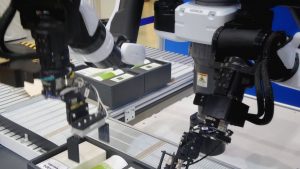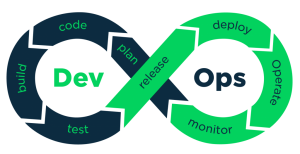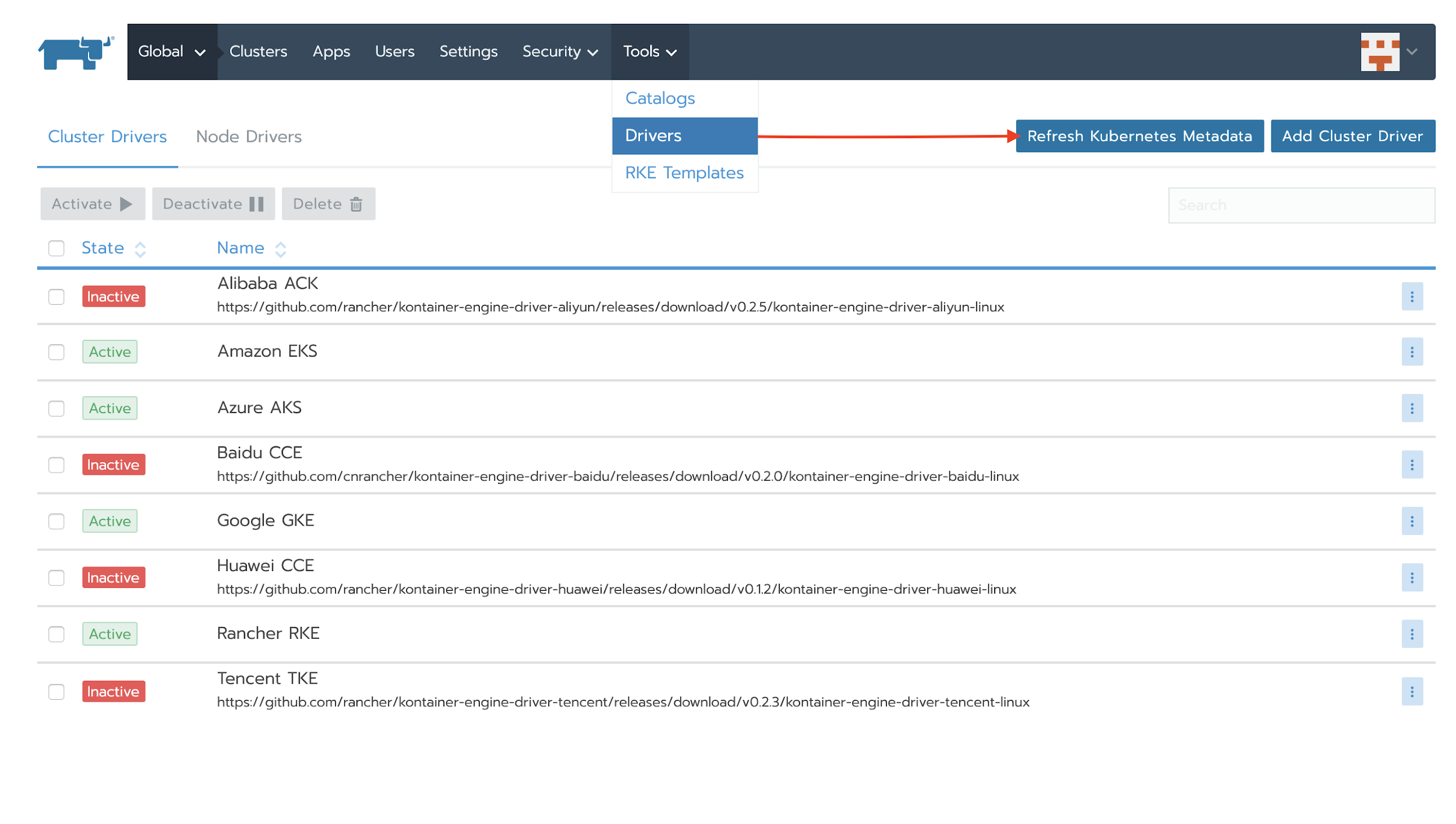In der aktuellen Situation hängt der Erfolg von Unternehmen mehr denn je von der Fähigkeit ab, sich schnell an neue Bedingungen anzupassen. Die IT ist dabei als Motor für Veränderungen gefordert. Sie muss Innovationsprozesse beschleunigen, Business-Anforderungen schneller erfüllen und Probleme effizient lösen. Dazu ist es notwendig, agile Methoden auf allen Ebenen zu etablieren – insbesondere auch im Edge- und IoT-Bereich.
Die weltweite COVID-19-Pandemie betrifft im Moment nahezu jedes Unternehmen. Produktions- und Lieferketten sind durch die globalen Einschränkungen enormen Herausforderungen ausgesetzt. Daher kommt es jetzt mehr denn je auf die Agilität der IT an – etwa im industriellen Umfeld. Supply Chains, die Produktionsstätten auf der ganzen Welt verbinden, müssen unter hohem Zeitdruck neu ausgerichtet werden. Veraltete, statische Systeme, die sich nur mit hohem manuellem Aufwand anpassen lassen, werden dabei schnell zum Bremsklotz für die notwendigen Veränderungen.

Gerade der Blick auf IoT- und Edge-Umgebungen zeigt, dass es praktisch unmöglich ist, Entwicklungsmethoden in einzelnen Teilbereichen von der Entwicklungsstrategie des Unternehmens zu entkoppeln. Stattdessen empfiehlt sich ein übergreifendes Vorgehen. Containerisierter Anwendungscode lässt sich sehr schnell auch auf Edge-Umgebungen portieren. Auf dieselbe Weise können Legacy-Anwendungen mit Micro-Services modernisiert werden. Dies setzt voraus, dass es einen einheitlichen Ansatz für kontinuierliche Bereitstellung und Automatisierung gibt. DevOps-Methoden sollten daher auch im Bereich der Edge-Infrastruktur angewendet werden – besonders wenn Schnittstellen zu Cloud-basierten Anwendungen und Services vorhanden sind.
Anwendungen für unterschiedliche Umgebungen entwickeln und bereitstellen
Unternehmen müssen aus diesem Grund Anbieter finden, die mit ihren Lösungen alle Bereiche des IT-Stacks abdecken und eine multimodale IT ganzheitlich unterstützen können. Die notwendige Agilität im Edge-Bereich kann nicht unabhängig von der übrigen IT betrachtet werden. Die Portierbarkeit von Code in unterschiedliche Richtungen – von der Cloud ins Unternehmen, vom Rechenzentrum bis zum Netzwerkrand – muss in der IT-Praxis das zielführende Prinzip sein.
Genau aus diesen Gründen führt an Open Source in Zukunft kein Weg vorbei. Allein dieser Ansatz stellt die Portabilität und Sicherheit von Anwendungen, die Breite der verfügbaren Funktionen und die Herstellerunabhängigkeit in den Mittelpunkt. Der erste Hersteller, der eine Linux-Plattform für Unternehmen auf den Markt brachte, war SUSE. Im Edge- und IoT-Bereich bietet SUSE heute weit entwickelte Lösungen, mit denen die IT digitale Transformationsprozesse vorantreiben kann.
Die Besonderheiten im Edge-Bereich
Sinkende Hardware-Kosten und Fortschritte bei der Software-Abstraktion machen heute Technologien, die früher nur im Rechenzentrum zu finden waren, auch im Edge-Bereich nutzbar. Ob im Transportwesen, in autonomen Fahrzeugen, in Kliniken und Krankenhäusern oder in dezentralen Versorgungseinrichtungen – viele Organisationen entdecken derzeit die Vorteile der Edge-basierten Datenverarbeitung.
Echtzeitergebnisse lassen sich mit lokalen IT-Ressourcen viel schneller zur Verfügung stellen. Darüber hinaus ist es angesichts der enormen Datenwachstums einfach unwirtschaftlich jedes am Netzwerkrand erzeugte Byte in die Cloud und wieder zurück zu transportieren. SUSE hat in seinem Portfolio die passenden Lösungen für typische Edge-Szenarien. So liefert etwa das SUSE Embedded Linux-Betriebssystem die erforderliche Leistung und Funktionalität, die die neuesten IoT- und IIoT-Geräte für aktuelle Geschäftsanforderungen benötigen.
Zum erfolgreichen Edge-Computing gehört allerdings mehr als die performante lokale Datenverarbeitung. Die SUSE CaaS-Plattform unterstützt die Entwicklung von containerisierten Anwendungen für Edge und IoT. Das Container-Netzwerk-Tool Cilium für Kubernetes und der SUSE Cloud Application Platform ermöglichen eine kontinuierliche und iterative Anwendungsbereitstellung im Edge-Bereich – im Einklang mit den übrigen agilen Entwicklungsaktivitäten.

Mit der schnellen Entwicklung und Bereitstellung containerisierter Anwendungen sind Unternehmen in der Lage, kurzfristig auf neue Herausforderungen zu reagieren. Die Agilität moderner DevOps-Verfahren wird daher zur Standardmethodik in allen Aspekten des digitalen Transformationsprozesses und macht die IT zum wichtigen Enabler.
Was Machine Learning heute schon leisten kann
Künstliche Intelligenz und Machine Learning sind die am häufigsten genannten Technologietrends der letzten fünf Jahre – und das aus gutem Grund. Keine aktuelle Technologie hat ein vergleichbares Potenzial, die Arbeitsweise von Organisationen zu verändern. In Verbindung mit IoT und neuen Kommunikationsmethoden wie LoRa und 5G kann die künstliche Intelligenz ihre eigene Leistung ständig verbessern. Sie generiert dazu immer bessere Erkenntnisse aus den großen Datenmengen, die von IoT-Lösungen der neuesten Generation gesammelt werden.
Viele Unternehmen profitieren heute bereits von Machine Learning-Funktionen in ihren IoT- und Edge-Anwendungen. Diese sortieren die lokal generierten Daten zunächst vor und leiten nur ausgewählte Daten zu zentralen Knotenpunkten weiter. Im Zeitalter von Big Data muss die lokale Vorverarbeitung möglichst schnell und intelligent erfolgen – und sofort verwertbare Informationen für das Business (und/oder Ergebnisse für kritische Anwendungen) liefern.
Voraussetzung für mehr Intelligenz am Netzwerkrand sind einfach skalierbare und verwaltbare lokale IT-Ressourcen. Daher setzen sich im Edge-Bereich zunehmend hyperkonvergente Systeme durch, die Server-, Storage- und Netzwerk-Ressourcen sowie Dienste für die KI-Verarbeitung auf einer schlüsselfertigen Plattform integrieren. Diese Systeme lassen sich bei wachsenden Anforderungen einfach erweitern und sehr effizient zentral verwalten.
Um für die Herausforderungen der Zukunft gewappnet zu sein, müssen Unternehmen die große Bandbreite an neuen Technologien – wie containerisierte Applikationen, softwaredefinierte Infrastrukturen und Automatisierungsplattformen – perfekt orchestrieren. SUSE bietet seinen Kunden daher heute Lösungen, die für durchgängige Agilität bei der Entwicklung und Bereitstellung von Anwendungen sorgen. Unternehmen können so Innovationen über alle Ebenen hinweg beschleunigen und Veränderungen in der erforderlichen Geschwindigkeit umsetzen.
Möchten Sie mehr darüber erfahren, wie SUSE Transformationsprozesse von der Cloud bis zum Edge-Bereich unterstützt? Dann nehmen Sie noch heute Kontakt mit uns auf.
 Nicht nur als Individuen und Familien müssen wir uns auf eine bisher unbekannte Situation einstellen, auch Unternehmen sehen sich vor ganz neuen Herausforderungen. SUSE Mitarbeiter und Unternehmensleitung geben ihr Bestes, um zu helfen: Unseren Kunden, Partnern und den Mitentwicklern in der Open Source-Community aber auch Herstellern von medizinischen Geräten und dem Gesundheitswesen, dem sie dienen.
Nicht nur als Individuen und Familien müssen wir uns auf eine bisher unbekannte Situation einstellen, auch Unternehmen sehen sich vor ganz neuen Herausforderungen. SUSE Mitarbeiter und Unternehmensleitung geben ihr Bestes, um zu helfen: Unseren Kunden, Partnern und den Mitentwicklern in der Open Source-Community aber auch Herstellern von medizinischen Geräten und dem Gesundheitswesen, dem sie dienen.

